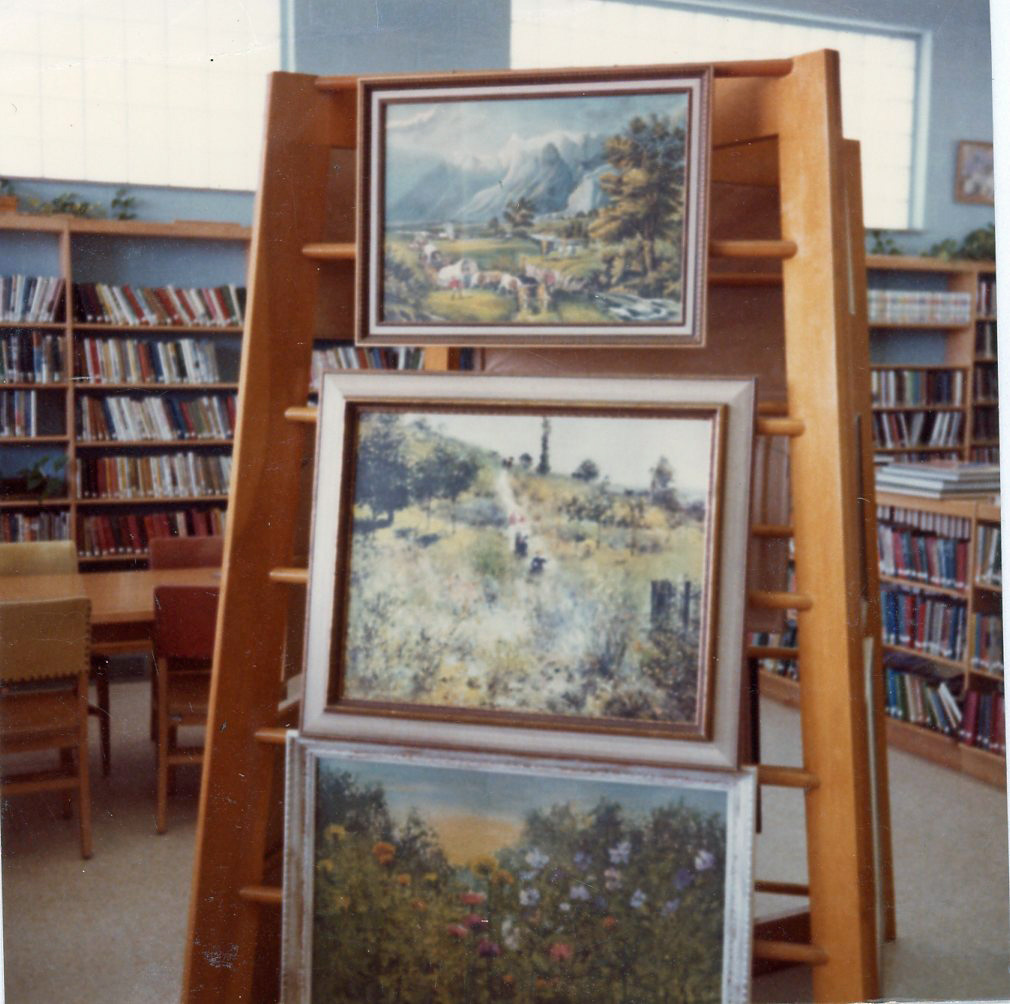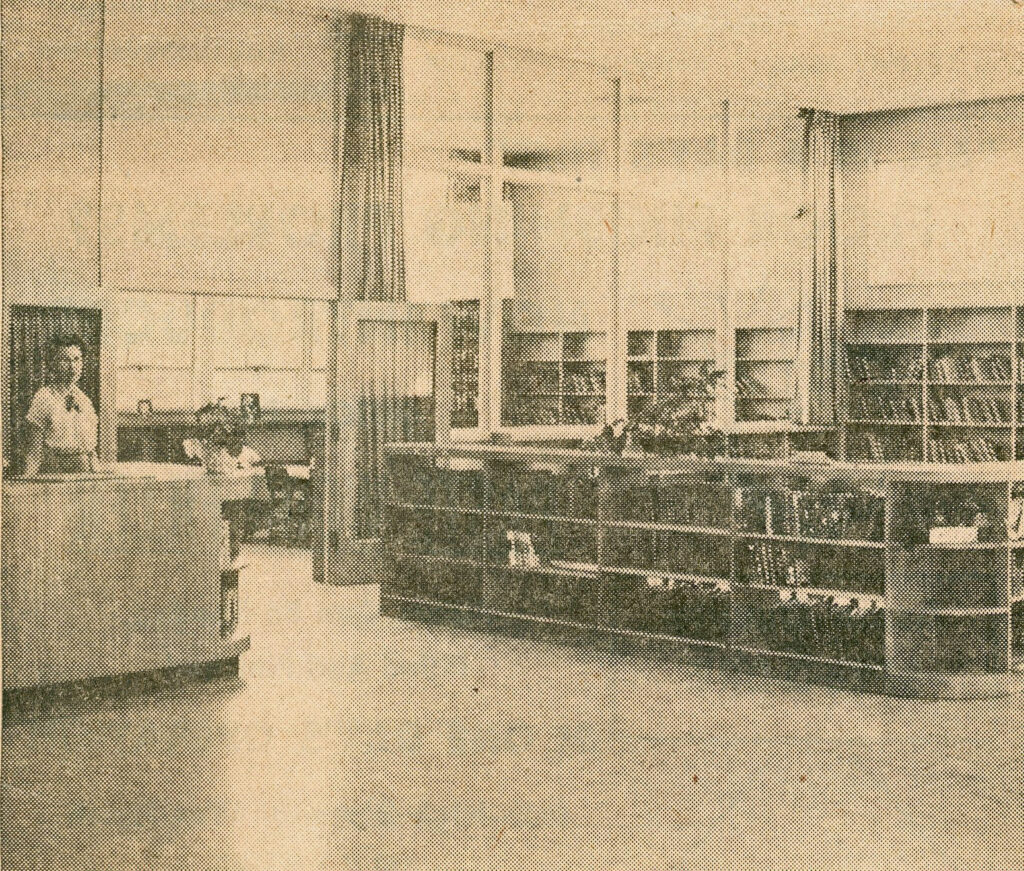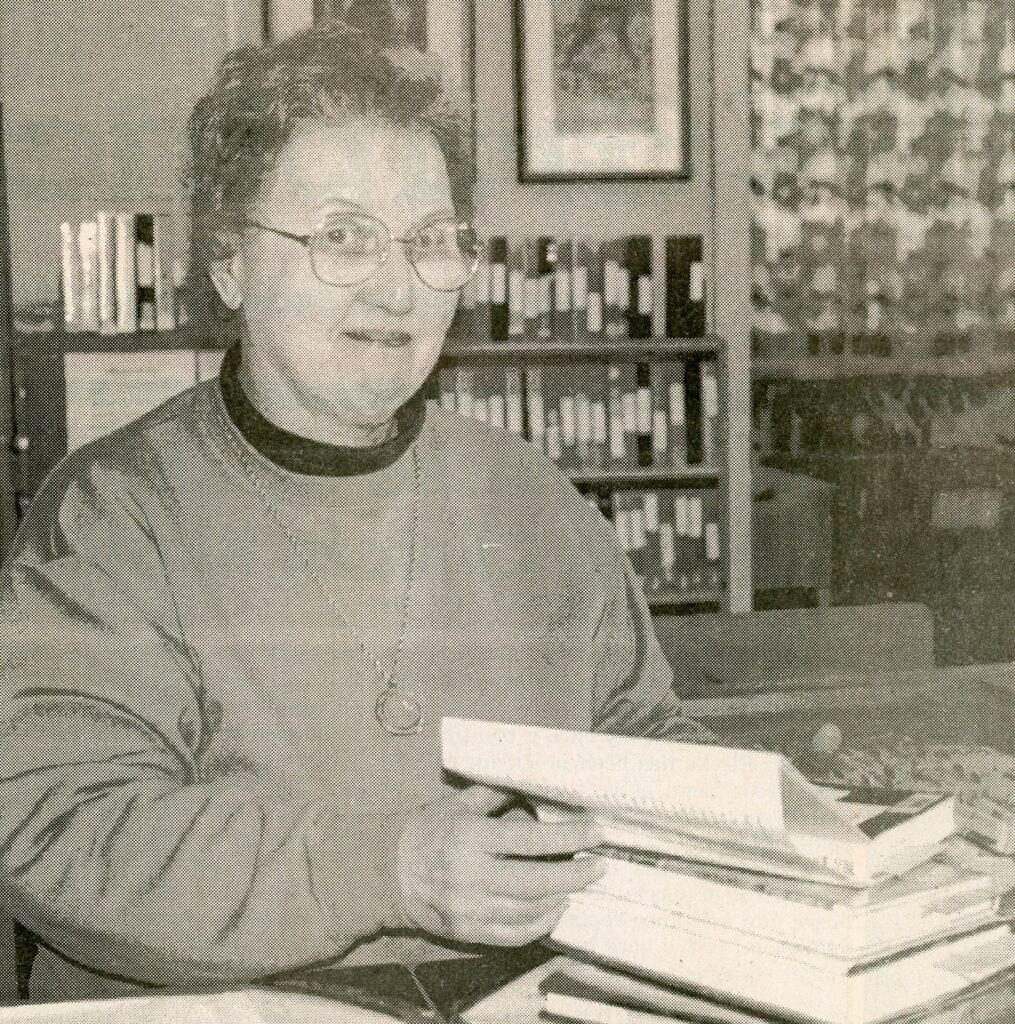In a bond issue that passed by only 8 votes, the Kinsley Library finally got its own, permanent home on March 22, 1954. No one can deny that the building has served the community well for the subsequent 68 years. It was tax money well spent.
Elsie Jenkins, librarian from 1941-1967, supervised the Boy Scouts in efficiently moving the books to 208 E. 8th St. They were in alphabetized boxes so that the books could go directly into their correct position on the new shelves.
The new building was described as “remarkably attractive and tastefully arranged…so that its operation would conform to the particular needs of a small library usually in charge of just one librarian.”
The original layout remains the same today. The high-quality maple furnishings have held up well.
In subsequent years, book browsers were added in memory of Kermit Wilson, Edna Brown, and Elsie Jenkins. In more recent years, Victor Hirsh adapted an original LP music browser into a work table for the genealogy room. An atlas stand/lectern (built by Bill Olsen) was donated in memory of Gerald E. Herrmann, and an entertainment cart was built by Gene Bender.
One part of the original building which some folks may not know about is the “Music Room” located just west of the entry. This small room was furnished in memory of Evelyn Carlson and contained a record player, head phones and a stool for listening to LP albums. Now that purpose has given way to housing the library server and other electronics. However, this library director has not had time to “deal with” the vinyl records, which have come back in vogue, and can still be checked out.
In 1954 a 16 mm film projector was purchased and used to show films at the library. Films, projector and screen could be borrowed. I have used the projector to look at vintage home movies of Kinsley. The library also had a film strip projector which the old folks will remember as projecting 35mm film – no sound, just images.
The room in the northwest corner began as a place to store the past issues of magazines. When internet access to periodical databases became available, it was no longer needed for that purpose. It is now a genealogy/local history resource room containing many resources generated by Ed Carlson.
The 15’ high shelving in that room is not very accessible even on the very cool, rolling library ladder. We have left the old issues of Look, Post, and Life magazines up there, and each week the magazines from 50 years ago are placed on the table for browsing.
This room has also housed the microfilm reader since 1955 when the earliest extant county newspapers were put on microfilm. The current machine also scans and prints the microfilm up to 2021.
Elsie Jenkins began keeping a burial card (retroactively) on everyone buried in Edwards County. Eula Westphal digitized the file in 2003, and it is kept up to date and available on the library website. The Hillside cemetery records were digitized by sexton Ray Wetzel. Mary Graff photographed the gravestones and all were put on the library website in 2004.
Mrs. Jenkins also started a record book of memorial book donations in 1954. donations Currently there are four volumes, a testament to the public support given to the library over the years. Memorial donations remain a financial source for purchasing new books.
When Mrs. Jenkins retired in 1967, Edna Brown, who had been hired as assistant librarian in 1940, became the librarian She would serve for a total of 32 years, retiring in 1972.
In 1969 the Kinsley Library became a charter member of Southwest Kansas Library System which is supported by the county’s rural taxpayers. Through a grant from the system, those rural taxpayers indirectly support the 3 county libraries (Kinsley, Meadowlark in Lewis and Henry Laird in Belpre).
Over the years, the system has provided summer reading materials, books to rural residents through the mail, interlibrary loan service, rotating book collections, and help for any activity or issue the library has had. It remains an important resource today.
Mrs. Jenkins and Mrs. Brown had provided summer reading for many years, but the system began supplying ideas for this programming and still does today.
Beverly Craft became the library director in 1972 and served until 1997. She wrote weekly book reviews for the newspaper. She continued and enhanced children’s programming. She saw computers come into the library and began the online catalog and check out system.
Miss Craft oversaw many art exhibits in the library and created the Vivian Elsbury print art collection for check out. When the 12 prints faded, their rack was turned into the children’s reading kiosk in 1999.

It was a fortuitous move when Miss Craft hired Rosetta Graff as librarian in 1973. She served for 47 years as the circulation librarian and a local historian until her retirement in 2020. In 1997 she was given the difficult task of training me.
Over the years, talented teens have also helped to furnished the library. The KHS metals class created the outside book drop in 1974. Humphré the foyer bookworm was created in 2001 by Marc Adams and Beth and Paul Strong under the mentorship of Bruce White. KHS Industrial Arts classes made a table for the genealogy room in 2008 and the shelf-end poster displays in 2011. Teens did the landscaping and created the Little Free Library in 2017.
Many volunteers did the research for the Digital Map of Historical Kinsley programmed by Don Benish. Many people have and continue to offer oral histories, photographs, documents and stories for the archive.
I regret this article leaves out so many contributions by librarians and citizens. All have made the Kinsley library a truly community library. A more complete offering can be found on the Library Board History and the Library Timeline on library website.
It is my joy and privilege to be a 25-year part of this Kinsley Library adventure.




